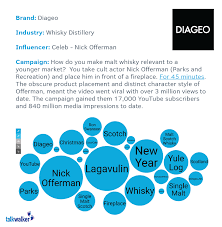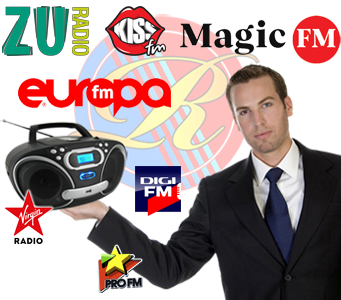
Targeted online advertising can be an effective tool for reaching customers. When launching an ad campaign, there are a few things you need to remember. You can improve the effectiveness of your advertising campaign and increase your ROI by following these guidelines.
Consider your target audience first. This will allow you to decide where to place ads. A good way to do this is to determine your audience's demographics. Demographics can include location, gender, age and even gender. Targeting your ads to people with long-term relationships or who are getting married is one example.
Consider the content that your customers are most interested in. If they're interested in home decor, your ads can be targeted to home improvement websites. Ad space can also be purchased on blogs.

Lastly, it's always smart to use a mobile version of your website. An app optimized for mobile devices is a good idea if you own a retail store. If you are a financial services provider, it may be a good idea for an ad to appear on your investment blog.
Google's Custom Audiences tool is one method to achieve all of the above. An account can be created and you can target your ads to users according to their email lists. Facebook and Twitter allow you to create Custom Audiences.
Behavioral targeting, which is one of the most crucial aspects of targeted online ads campaigns, is huge. It determines which pages users visit, how often they click your ads, and their past purchases. These information can be used for marketing customization and to enhance the relevancy of your brand.
The internet has opened up many new avenues for consumers. Businesses have hundreds of options to reach their customers. It's essential to find the right ones. Your ad should be a step ahead of the competition.

Online advertising is most effective when it is targeted to your audience. The right ads can help increase awareness of your brand, encourage customers to visit your website, and convert leads in to paying customers. Advertising strategy should include identifying your target audience, placing your ad before them and communicating with them.
There are so many options, it can be hard for someone to decide which one will work best. However, there are a few tips that can help you build a targeted online advertising strategy that will help you boost your brand's visibility, traffic, and conversions.
A regular assessment is a great way to track your numbers. This will allow you to see areas that need improvement. A limit on the frequency of ad placements can be set to prevent customers from being bored. These are the essentials, but it is the creative and compelling ads that will really win customers' hearts.
FAQ
What is an advertiser buyer?
Advertisers buy advertising space on television, radio, and print media.
An advertiser pays for the time they want their message to appear.
They don't necessarily look for the best advertisement, but instead seek out the most effective way to reach their target market.
Advertisers might have certain demographic information about potential customers. This could include age, gender income level, marital status and occupation as well as hobbies, interests, and so on.
These data can be used to help advertisers decide the most effective medium. An example is direct mail that appeals to older people.
Advertisers also consider the competition. If there are similar businesses nearby, they might choose to place their ads near those competitors.
In addition, advertisers consider the size of their budget and the amount of time they have to spend their money before it expires.
What should you know about internet marketing?
Internet advertising has become an integral part any business strategy. It allows businesses to reach potential clients at a low price. There are many forms of internet marketing. Some are free while others may require payment.
You can also advertise online using banner ads, pop up ads, search engine optimization, pay-per-click advertisements (PPC), social media marketing (e-mail marketing), and mobile marketing. Each method has its benefits and drawbacks.
Radio advertising: What are your options?
Understanding how different media interact with each other is crucial. All media forms can be considered complementary, rather than competing.
Radio is best used to complement television advertising. Radio can complement TV advertising by reinforcing key messages, and providing additional information.
Radio listeners are often not able to handle long TV commercials. Radio ads are typically shorter and less costly.
What should you know about printing advertising?
Print advertising is an effective way to reach consumers. Many companies use it to promote products and services. The key objective is to capture the attention of the consumer.
Print ads are usually one-page long. They contain text, images, logos, and any other graphics. These ads may include sound, animation and video as well as hyperlinks.
Here are the main types and classifications of print advertising:
1. Brochures: These large-format printed pieces are meant to draw customers into stores. They are often filled with colorful images and catchy designs.
2. Catalogues are smaller versions than brochures. These are often sent to customers who have asked for information on particular items.
3. Flyers are small pieces or paper distributed at events such concerts and fairs. These flyers are usually free, but they must be purchased if given to retail outlets.
4. Posters - These flyers can be larger than the ones you see on the flyer. They can be displayed on fences, walls, or buildings. These are often created with computer software programs to grab the attention of passersby.
5. Direct mail: These are postcards or letters that are sent directly by post to potential customers. These are sent periodically by companies to remind current customers about their business.
6. Newspaper Ads - These advertisements are found in newspapers and magazines. They are usually quite long and contain both text and images.
How much does it cost to advertise on social media?
This route is not for everyone. You'll be charged monthly according to how long you spend on each platform.
Facebook: $0.10 per 1,000 impressions
Twitter: $0.20 per 1,000 impressions (if your tweet is on Twitter)
If you send out invitations to Linkedin, $0.30 per 1,000 impressions
Instagram - $0.50 per 1,000 impressions.
Snapchat - $0.60 for 1,000 impressions ($0.40 Per User)
YouTube - $0.25 for 1,000 views
Tumblr $0.15 for 1,000 impressions text posts
Pinterest - $0.05 per 1,000 impressions per month
Google + $0.15-$0.20 for 1,000,000 impressions
Tumblr - $0.15- $0.20 per 100,000 impressions
Vimeo - $0.20 to $0.25 per 10,000 impressions
Soundcloud - $0.20 to $0.0.25 per 1 Million Plays
StumbleUpon - $0.20 -$0.25 per 1 billion pageviews
Digg - $0.20 - $0.25 per 1000 diggs
Reddit - $0.20-$0.25 per 1000 comments
Wordpress - $0.20 to-$0.25 for 500 comments
Flickr - $0.20 -- $0.25 per 5,000 photo uploads
How can I choose my target audience
Begin with you and your closest friends. Do you not know where to start? Ask yourself "Whom do I want to reach?"
Ask yourself the following questions: Who are my industry's most influential people? What problems do they deal with daily? Which people are the most intelligent in my industry? They hang out online.
Rewind to the beginning, when your business was founded. Why did you start? What problem were you able to solve and how did this happen?
These answers will allow you to determine who your ideal customers are. This will allow you to learn more about your ideal customers and their motivations for buying from you.
To get clues about who they cater to, you can also check out your competitors' social media pages and websites.
Once you've identified your target customers, you'll need to decide which channel(s) to use to reach them. An example: If you provide services to realty agents, you may create an informational website for home buyers.
A blog that targets small-business owners could be a possibility if you are a software provider.
If you sell clothing, you can create a Facebook fan page for teens. If you own a restaurant, you can set up a twitter account to provide information for parents searching for child-friendly options.
It is important to remember that there are many methods of getting your message across.
What is an advertisement campaign?
Advertising campaigns are a series or advertisements that promote a product. It can also refer to the whole production of such ads.
The Latin word for "to Sell" gives rise to the term "ad". Marcus Terentius Varro, 116-27 BC, was the first to use it. He used it as a verb that meant "to make a sales."
Advertising campaigns are often carried out by large agencies or companies. These campaigns may include many media types such as print, television, radio and the internet.
Advertising campaigns are typically long-lasting and have clear goals. One example is that some campaigns seek to create awareness while others are more focused on increasing sales.
Statistics
- This means that at least 50% of an ad needs to be shown on the screen for at least one second. (quicksprout.com)
- Advertising spending as a share of GDP was about 2.9 percent. (en.wikipedia.org)
- It collects money from the advertisers, keeps 32% for its role in facilitating the process, and the remaining 68% goes to the publisher (you). (quicksprout.com)
- Worldwide spending on advertising in 2015 amounted to an estimated US$529.43 billion. (en.wikipedia.org)
External Links
How To
How to make sponsored ads on Facebook
Facebook has been one of the most popular social media platforms. It has been estimated that there are 1.79 billion active monthly users worldwide. This number continues to grow every day.
Facebook is completely free. However, you will need to pay to reach your target audience. Paid advertising options include promoted posts and banners.
Log into the existing app if you already have it registered. If not, click "Create New App". Follow these steps:
-
Click "Add Platform", under the Apps section.
-
Select "Advertising", then click on Continue.
-
Complete the form, and then submit it.
-
After approval, you will get a Client ID and Secret key. You will need to copy them.
-
Copy the keys and paste them into the fields.
-
Type the campaign name and choose the currency.
-
Click "Begin Campaign".
-
Follow the instructions until you see the first banner. Copy the URL and return to your Facebook page.
-
Paste the code into Facebook's box.
-
Click "Save Changes".
-
Your ad should now be live!
-
Repeat steps 10-12 for each banner you would like to make.
-
After you're done, click "Continue". The rest of the process will continue.
-
Create your final ad group.
-
Once you're done, click on "View All Ads", to view all of your campaigns.
-
Click the "Remove Advertisements" button next to any ad.
-
If your campaign is not producing results, make sure you have followed the instructions.
-
Check the date range of your campaign.
-
You should set your budget in a sensible way.
-
Save your changes.
-
Before you click "Submit", please review the settings.
-
Wait for your ads appear on your timeline
-
Congratulation on a job well accomplished!
-
Let's now look at some tips to improve your results.